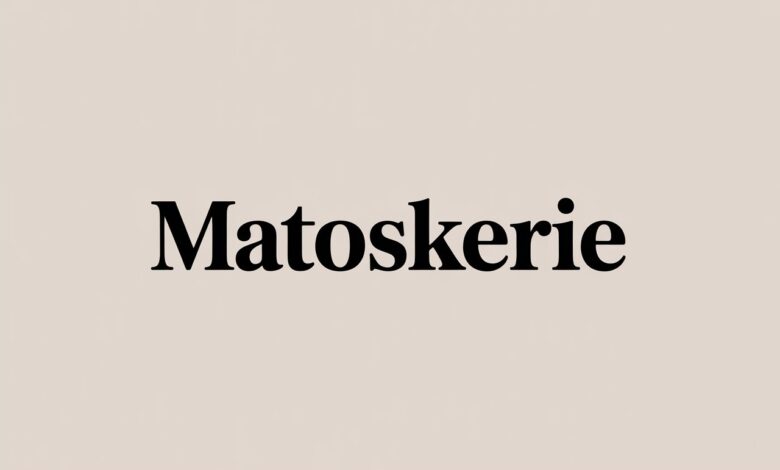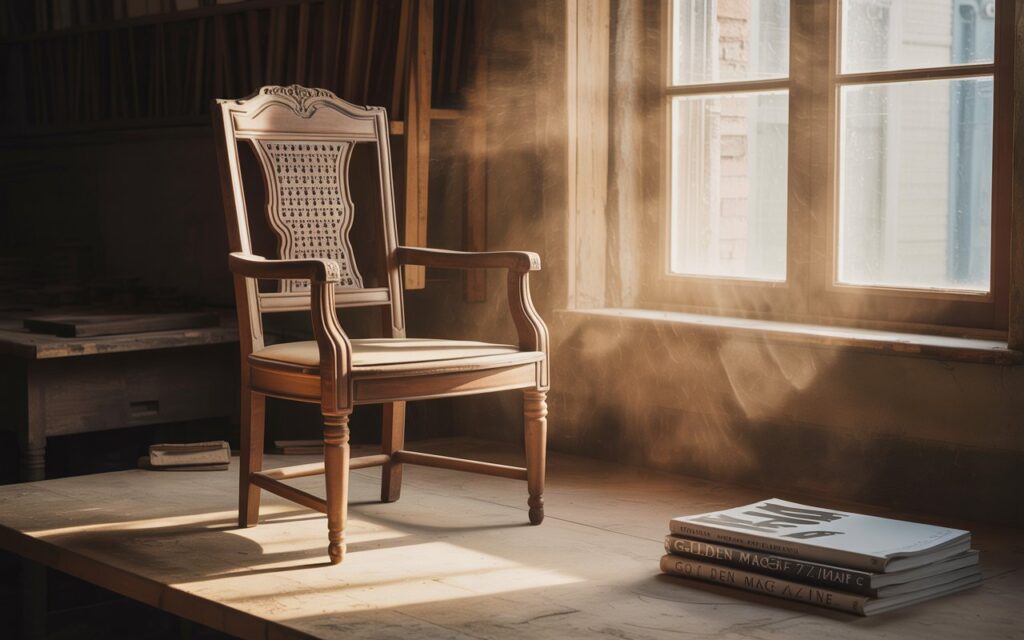Matoskerie: The Gentle Art of Creating with Meaning and Heart in 2025

Have you ever heard a word that sounds both old and new? That’s matoskerie. It is a word people use to talk about art, story, and how things are made. Some call it a style. Others call it a way of thinking. The word feels warm and a little mysterious. People use it when they want to show care, story, and meaning in what they make.
Why does matoskerie matter now? Many people want things that feel real. They want objects, rooms, or brands that tell a story. It is a way to bring that story back. It helps creators slow down and make with thought. It also helps small brands stand out. In short, It links old craft ideas with today’s design and online world.
What Matoskerie means (in simple words)
Matoskerie is not one fixed thing. It is a mix of craft, story, and care. Think of a handcrafted chair made with skill and feeling. Think of a small story told at a market. It is that feeling — when an item or idea carries meaning beyond its use. It can be a look, a way of working, or a way of telling.
People use matoskerie for many things. Artists and designers use it to name a project. Shops use it to give a brand a warm voice. Online groups use it to show they value real craft and honest design. The word is flexible, so groups shape it to fit their needs.
Where the word came from — a short story
No one can point to one exact place where matoskerie began. Some researchers say it grew from old artisan words in Europe. The ending “-erie” often names a craft, trade, or small shop. Long ago, people used words like this to name places where skilled hands worked and stories were told. Over time, the idea grew into the It we talk about today.
You can picture it as a small workshop on a quiet street. A maker shapes wood while telling a memory. Neighbors stop. A pattern or a phrase carries on. That kind of everyday scene helped It take root — a mix of skill, story, and people.
Matoskerie in culture and folklore
Matoskerie often links to oral stories and local gatherings. In many places, it grew where people met to share songs, jokes, and lessons. Those events were not only fun. They passed on local memory and ways of living. It keeps some of that same purpose: it holds culture and memory in small, human ways.
That is why matoskerie can feel like a bridge. It connects older village ways of sharing to today’s world of online groups and brands. A folk tale told at a fire and a short video shared online can both carry It if they pass on feeling and meaning.
How matoskerie looks today — craft, design, and the web
Today, matoskerie appears in many places. You can see it in slow-made furniture, in small fashion lines, and in websites that tell personal stories. Designers use matoskerie ideas to make things that look simple but feel full of meaning. This makes It a good choice for people who want honest design and steady values.
Online, the word travels fast. Small creative groups adopt matoskerie to name projects or to build a shared identity. Brands use it to stand out from mass-made products. In short, It helps mix the human touch of craft with the reach of the internet.
How to bring matoskerie into your own work

You don’t need a big studio or fancy tools to start with matoskerie. You can bring its spirit into anything you make — a small craft, a brand, a story, or even how you decorate your room. The main idea is to make things with care and meaning. When you take your time, you make something that lasts longer and feels real.
For example, if you make handmade jewelry, try to give each piece a small story. Maybe it’s inspired by a family memory or a local flower. That story gives it a matoskerie touch. If you work with digital art, you can do the same. Add personal feeling. Share the reason behind what you create. It is not about perfection — it’s about truth and care.
The key is to make your work feel alive. When someone looks at it, they should feel the thought and effort behind it. That’s what makes It special — it connects people through feeling, not just through looks.
Matoskerie in small brands and creators
In 2025, small brands have a big chance to grow through matoskerie. People today don’t just want to buy things — they want to feel something when they do. They want to know who made it, how it was made, and why it matters. That’s where matoskerie fits perfectly.
A small clothing brand, for example, can use It by showing the faces behind the work — the makers, the tools, and the story. Even simple photos of hands sewing or designing can create that human link. Customers start to feel part of the story.
Online creators also use matoskerie in their content. They don’t just post products; they share memories, ideas, and lessons. This builds trust. It’s not about big marketing words — it’s about real stories told simply.
Real examples of matoskerie around us
Look around, and you’ll see matoskerie everywhere. Some small cafes show it in how they design their menus and spaces. They mix handmade signs, soft colors, and personal touches. Artists bring it into their illustrations or short films. Even tech designers add It ideas when they build apps that feel warm and simple instead of cold and robotic.
There’s also a rise of “slow” movements — slow fashion, slow food, slow living. All of these share the same heart as It. They remind us to enjoy the process, not just the result. That is why matoskerie fits so well with today’s world — it slows us down in a fast time.
When people see or feel matoskerie, they often say, “It just feels right.” That’s because it mixes design, memory, and care in a way that feels honest and human.
Why matoskerie matters today
In a world full of fast trends and copy-paste designs, matoskerie reminds us of what really matters. It asks us to slow down, to make and share things that hold meaning. It turns a simple act — like painting, writing, or crafting — into something deeper.
It also helps us connect again. People are tired of fake perfection online. They want warmth and truth. Matoskerie gives that. It makes both makers and viewers feel more grounded. It’s not only about beauty — it’s about being real.
That’s why matoskerie is more than just a style or a word. It’s a way to live and create.
The future of matoskerie
As we move forward, matoskerie will likely grow even more. It may show up in new art forms, digital tools, or even community projects. Young creators love it because it gives them freedom to express who they are — not just what they make.
Imagine future homes filled with small handmade items, or online spaces where every project has a personal story. That’s what It can lead to — a world that feels softer, slower, and more human.
It’s not a passing trend. It’s a quiet movement that helps people remember the joy of making with heart.
Final thoughts
Matoskerie is about bringing meaning back into what we make and share. It’s about adding care to every little thing — a design, a post, or a product. When you create with heart, others can feel it too.
So next time you make something — no matter how small — think of It. Add a story, add care, and make it yours. That’s how simple things turn into something beautiful and lasting.
Because in the end, matoskerie isn’t just about what you make — it’s about how it makes people feel. And that’s what truly matters.



